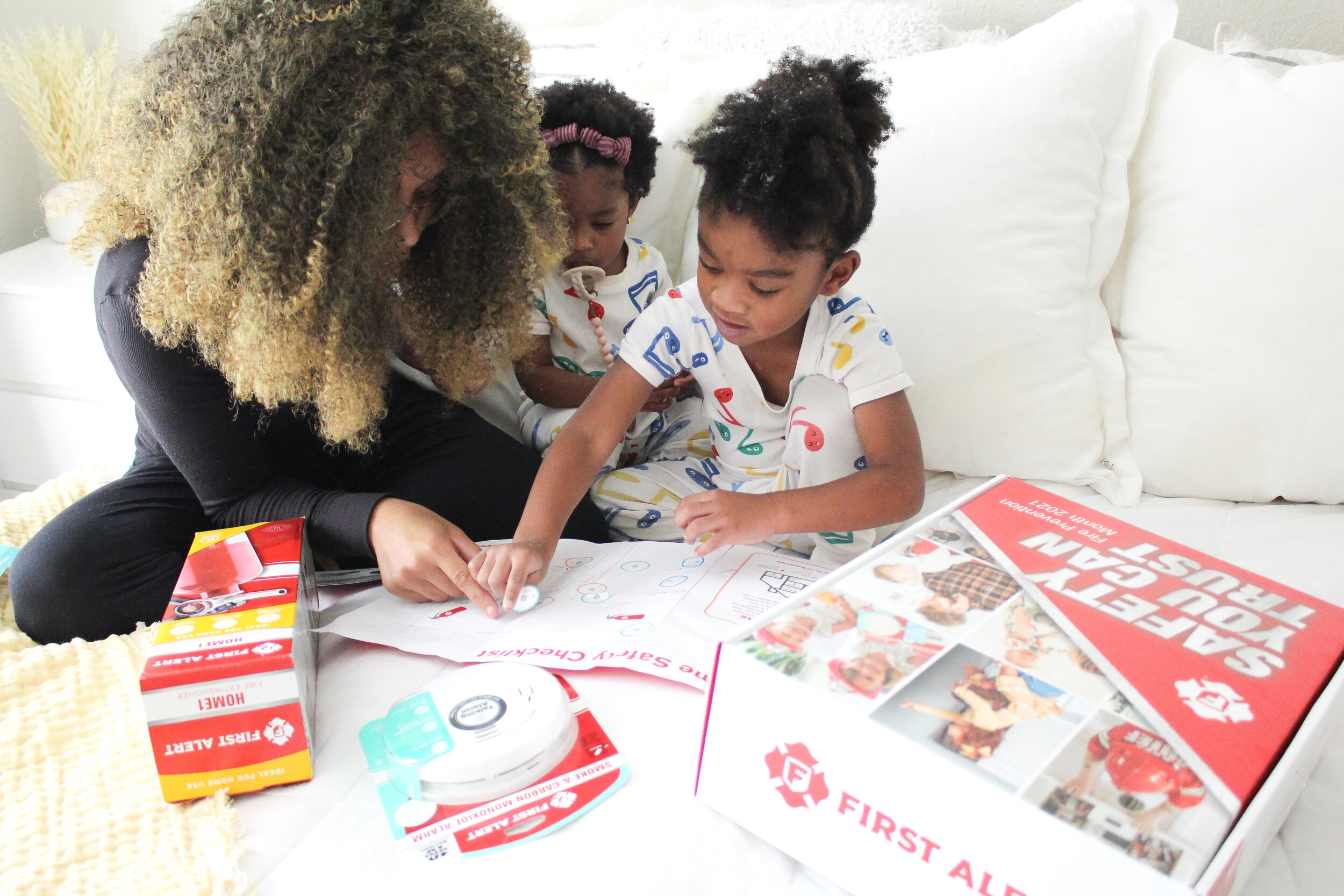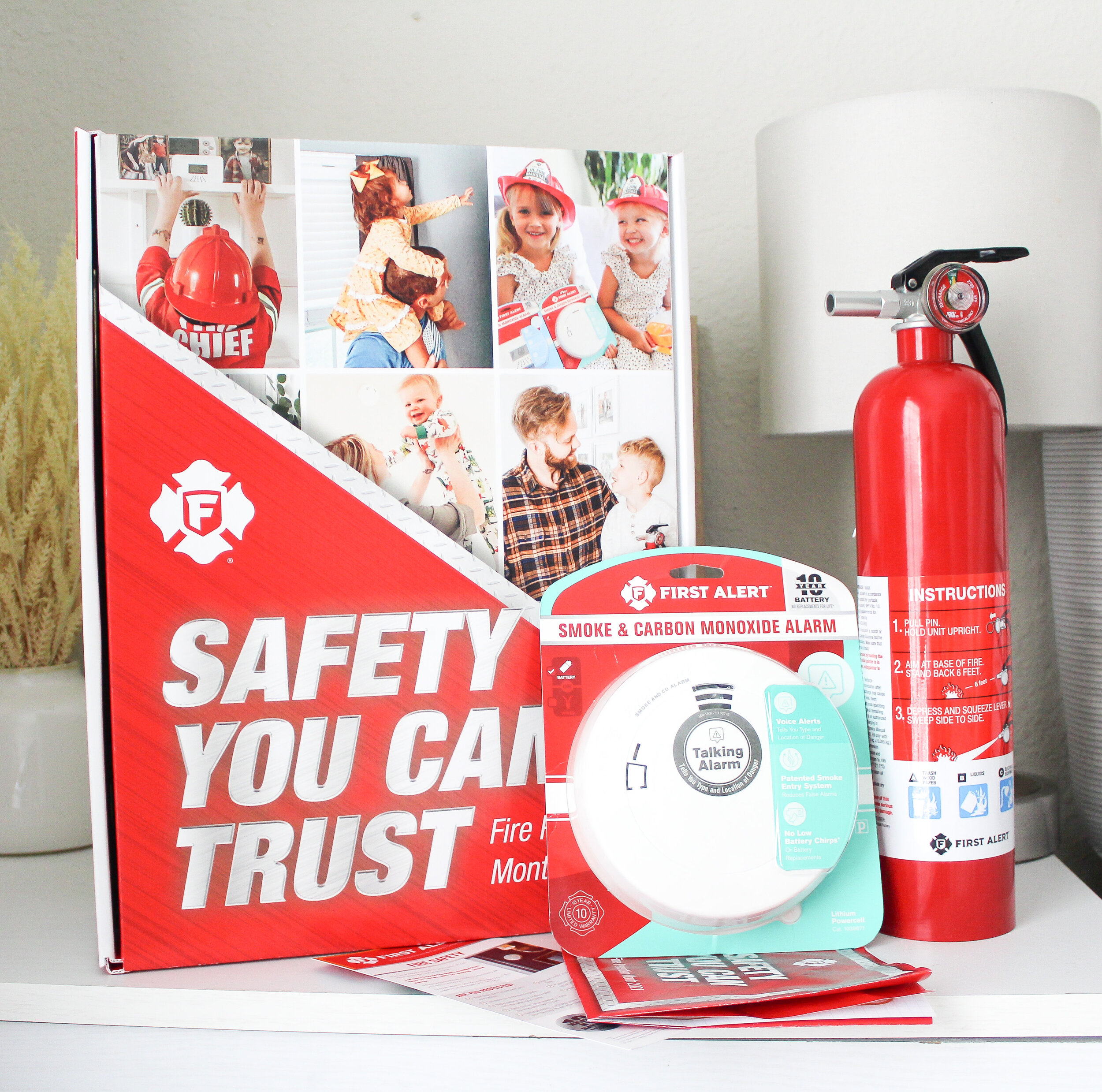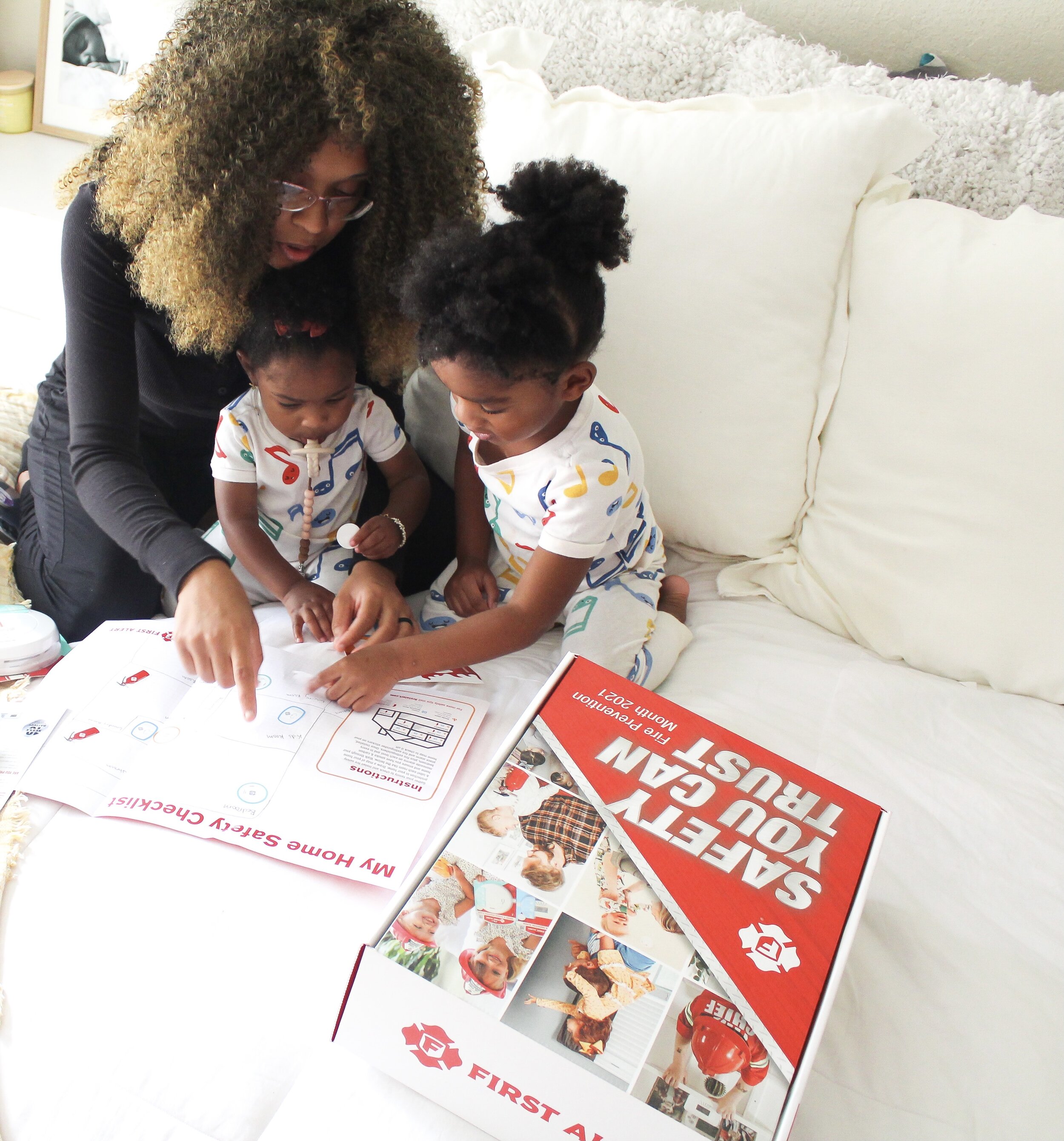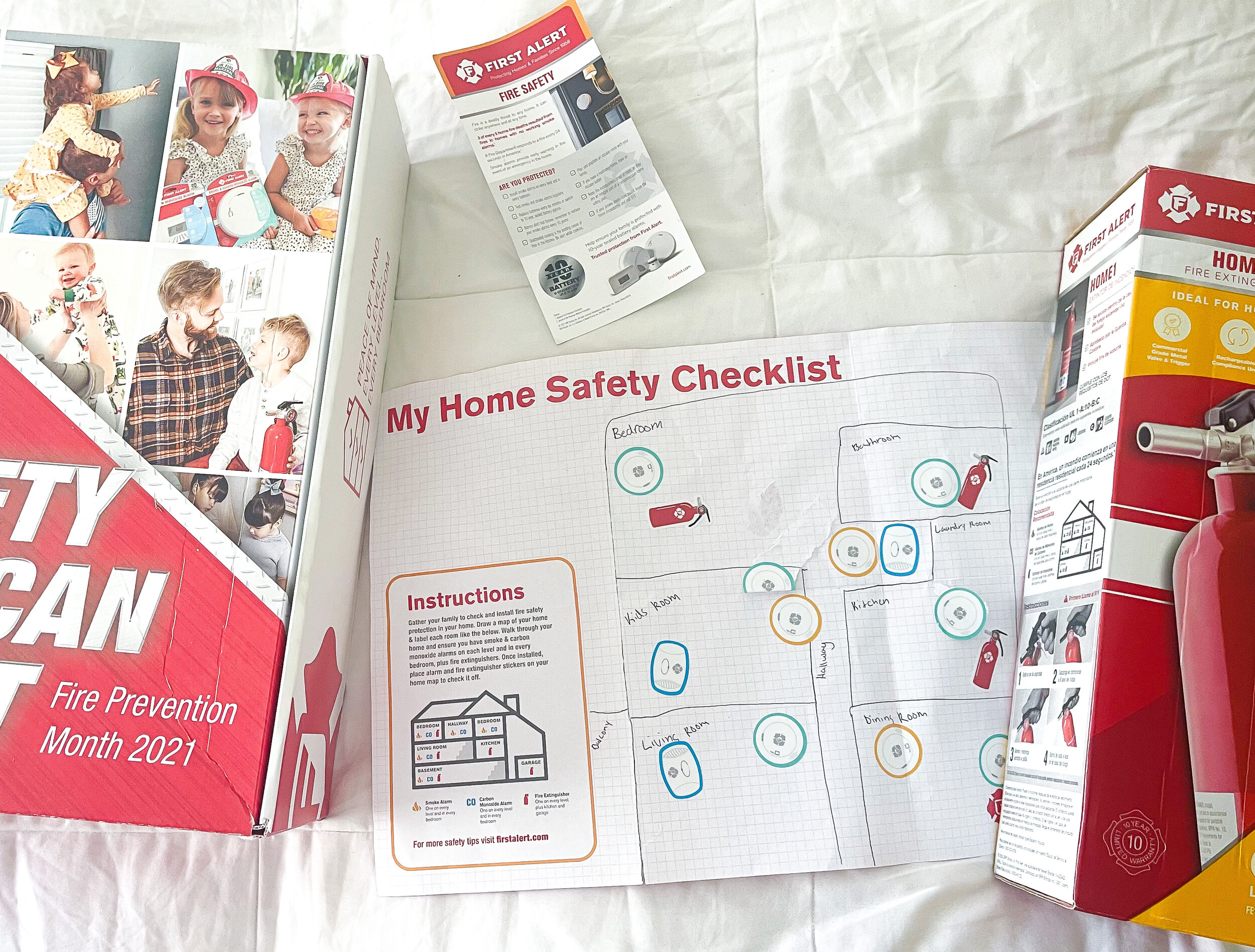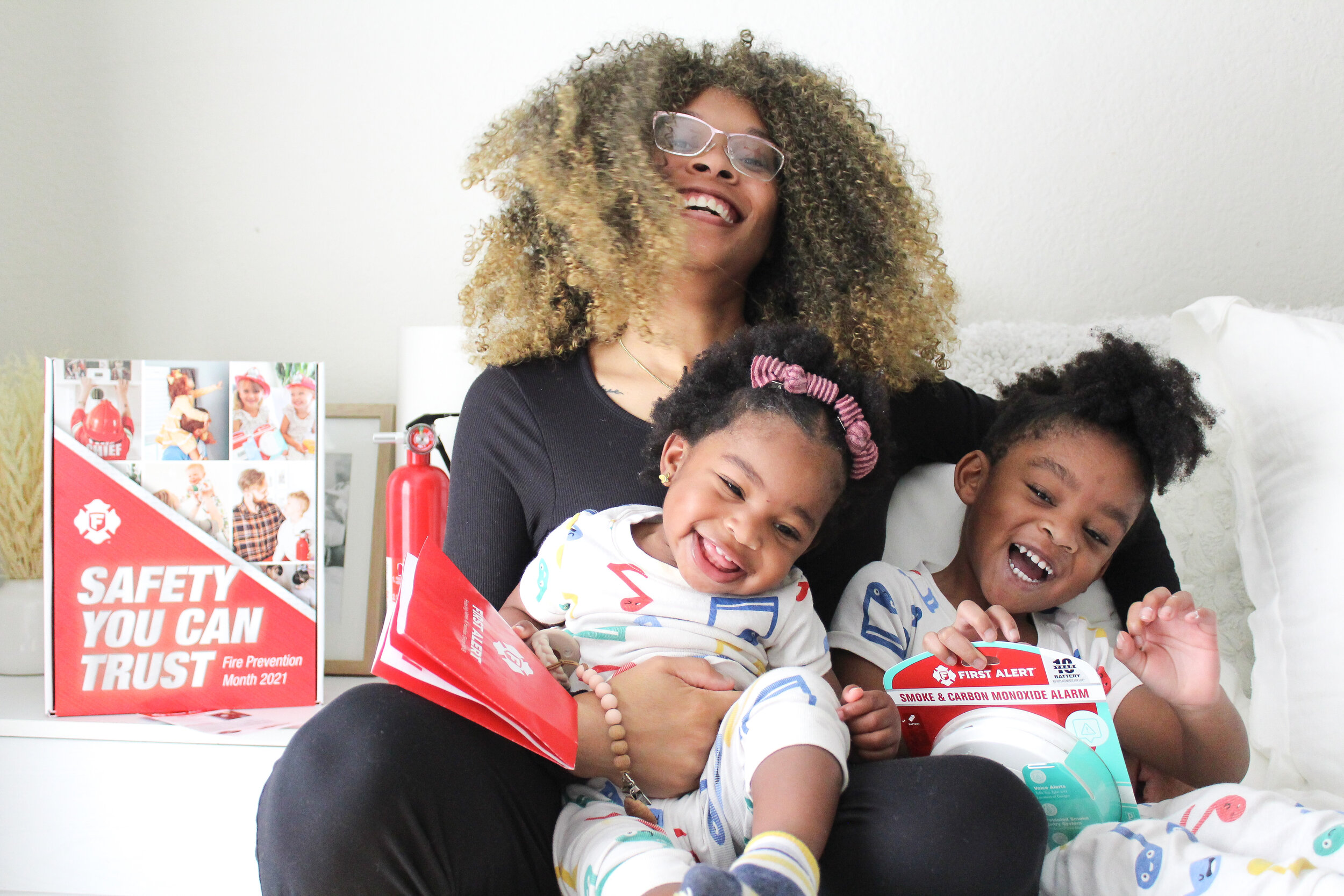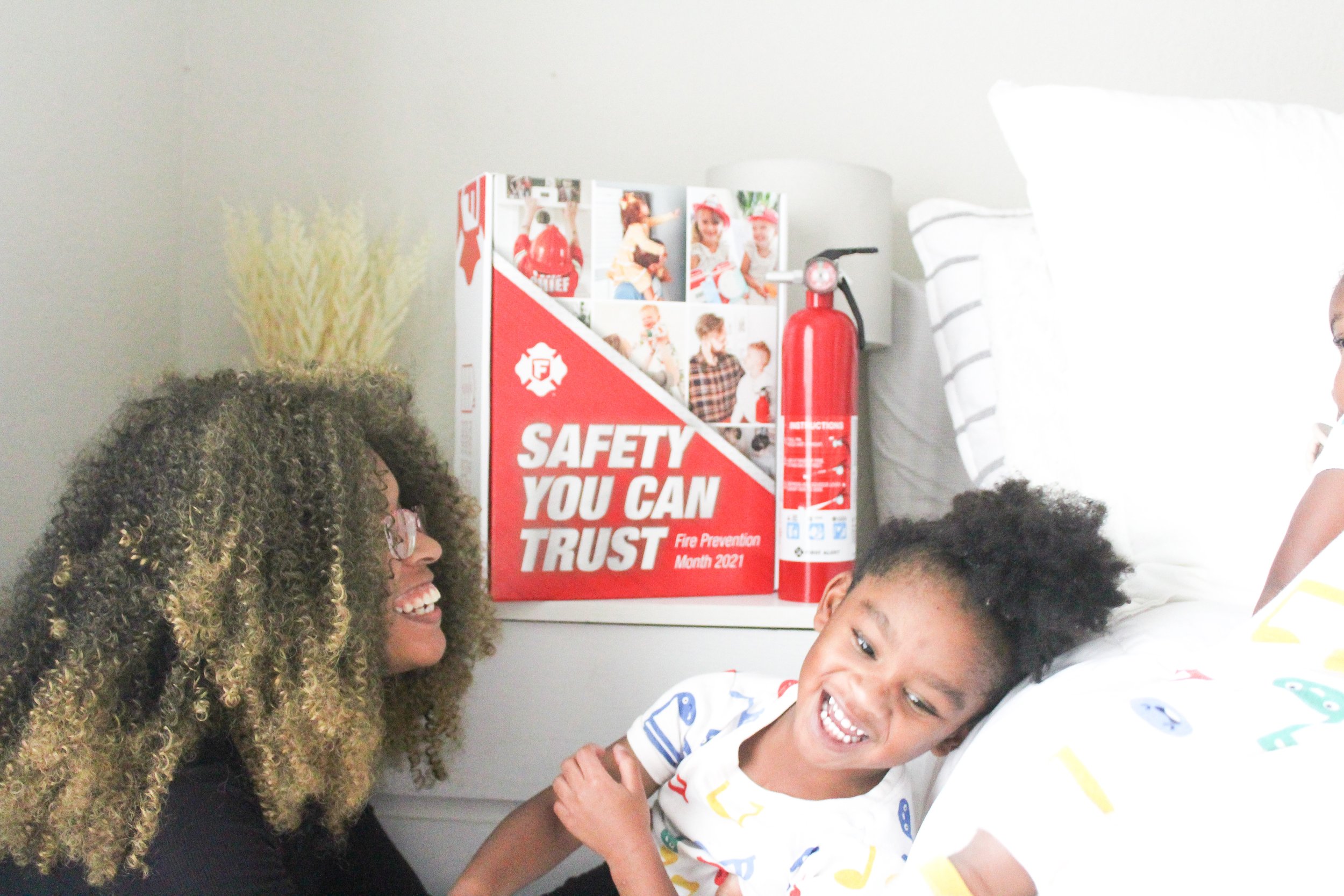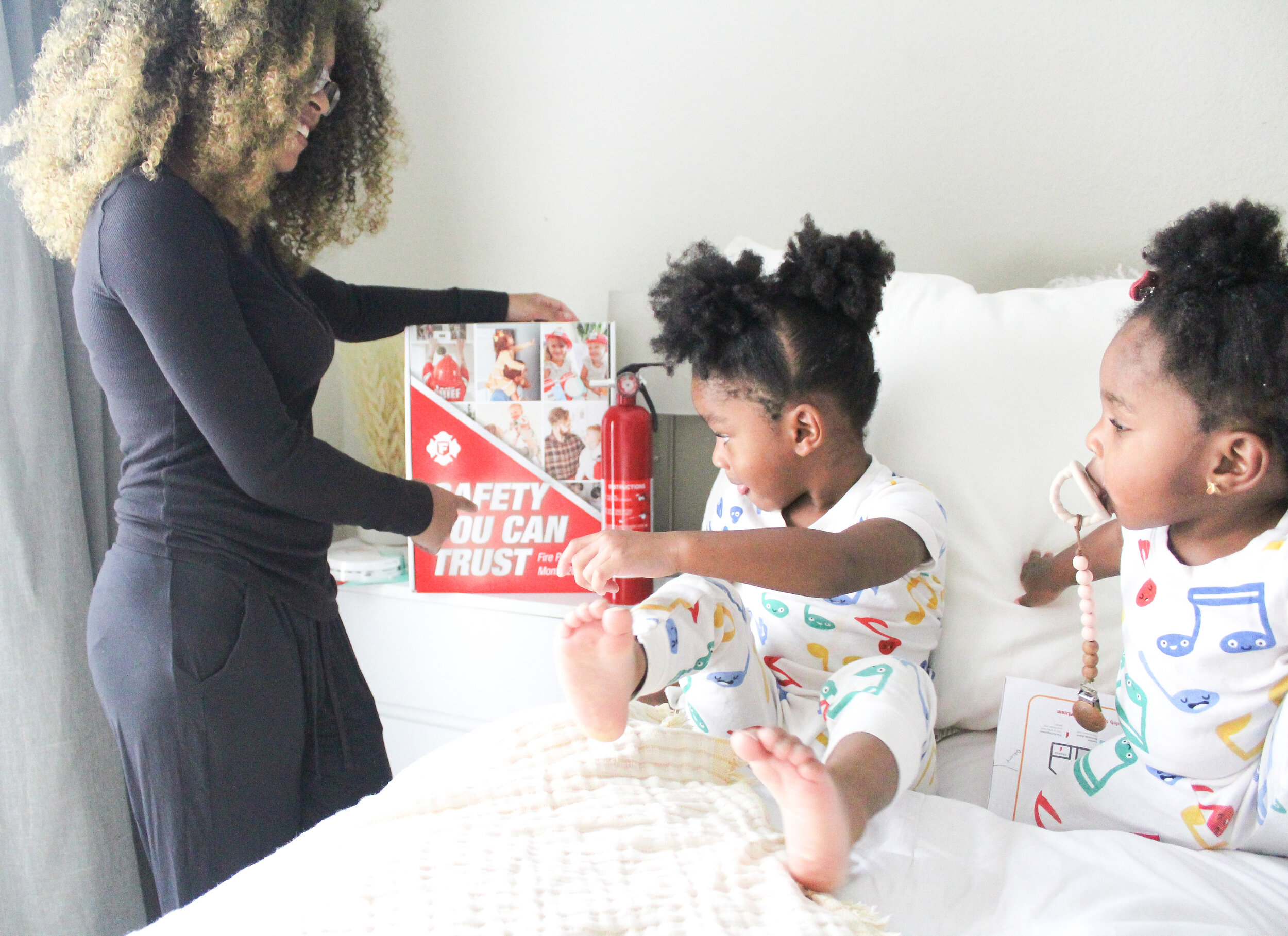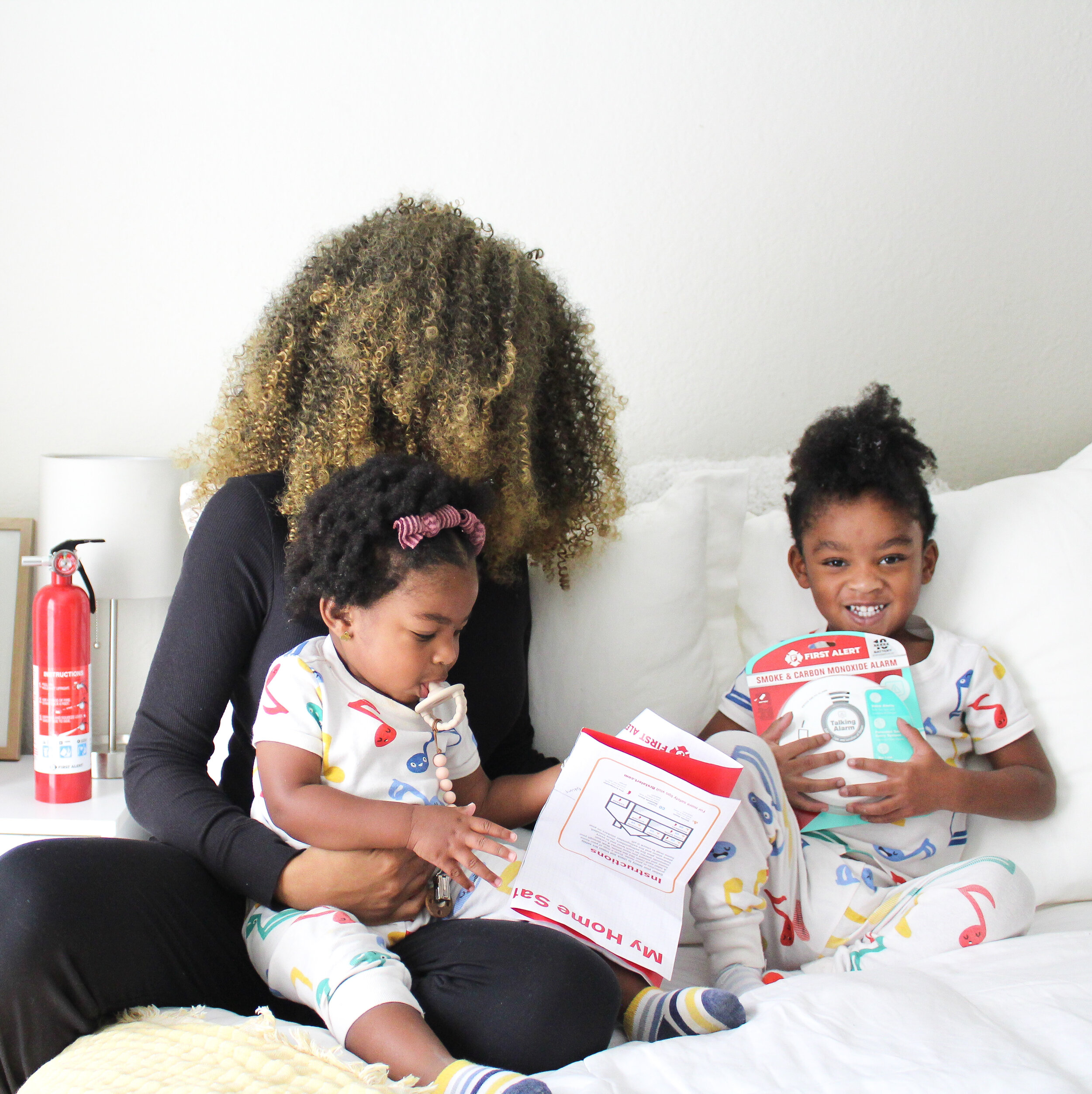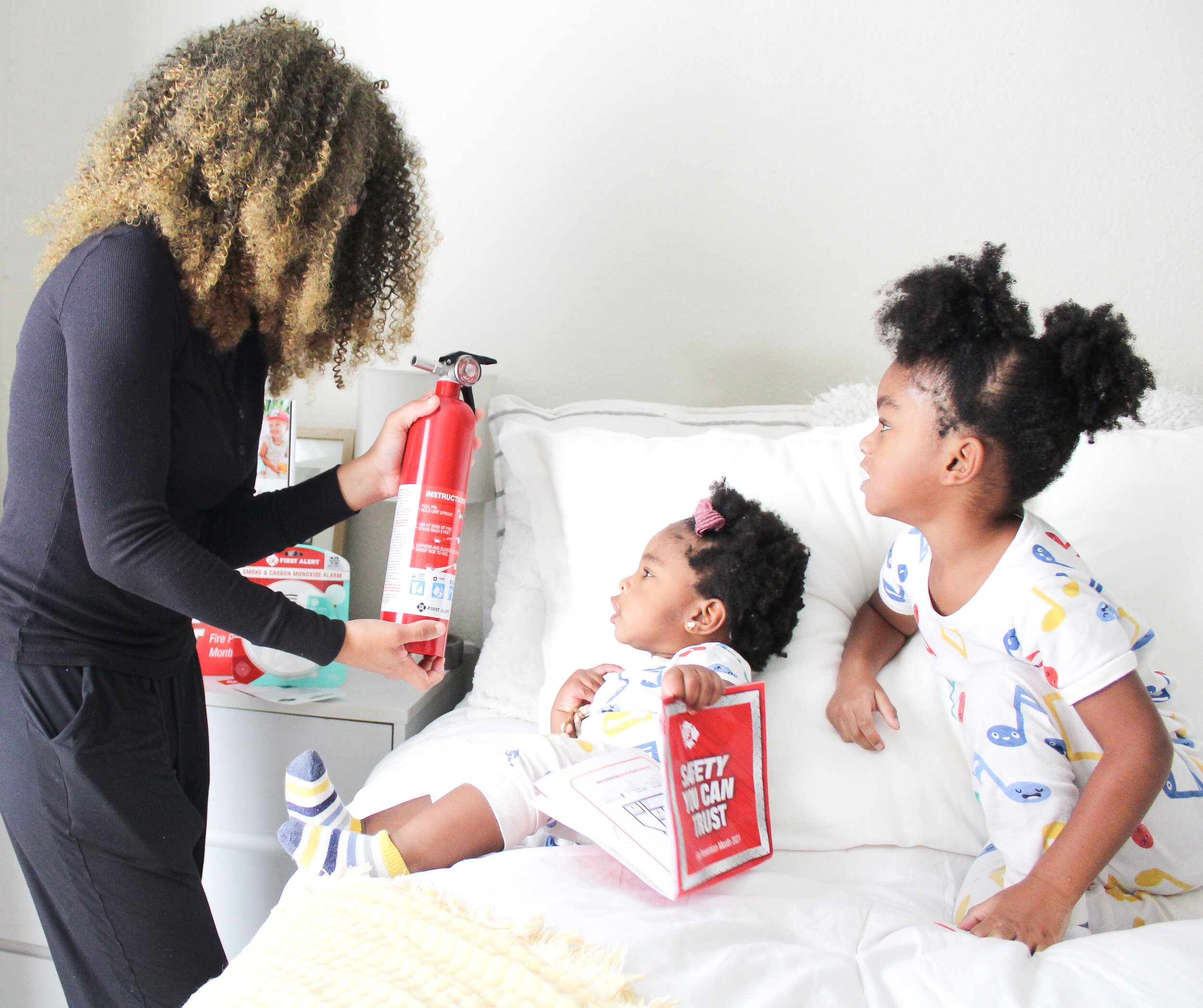Help Keep Your Home Safe with First Alert
Thank you First Alert for sponsoring this post.
When was the last time you checked your smoke and carbon monoxide (CO) alarms, changed the batteries, or even talked to your family about an emergency escape plan if a fire were to start in your home? I can’t answer for all but, for most, I'm sure it was a while ago, and honestly, coming up with an escape plan is just not common knowledge. Growing up, I don’t remember discussing what to do if our house were to ever catch on fire. I’m not even sure we owned a fire extinguisher now that I think about it. Luckily, we never experienced a fire, and I’m here today to talk to you about it. While we were lucky, that isn’t always the case because accidents happen.
October is Fire Prevention Month, and with First Alert’s Whole Home Safety Checklist, your family can take the necessary precautions to help protect themselves in case of a fire. First Alert helps you stay up to date on reliable safety tips for your whole home. It's super simple and the perfect opportunity to incorporate the whole family.
First things first, you have to install smoke and carbon monoxide (CO) alarms inside your home. A good rule of thumb is to install alarms in "every level, every bedroom." It's important to also make sure you're testing your alarms regularly (at least every six months), and for convenient protection, you can upgrade to 10-Year Sealed Battery Combination Smoke & Carbon Monoxide Alarms to eliminate battery replacements for a decade.
"3 out of 5 home fire deaths occur in homes with no smoke alarms or no working smoke alarms," and as unlikely as it seems, it can happen. Just recently, I lost a family member to a house fire. There was no emergency escape plan in place, a non-working smoke alarm, no fire extinguisher, and it made me think, am I even prepared if a fire were to happen in my home? The short answer is no, but now thanks to First Alert, I have an emergency escape plan to help keep my family safe that we will practice at least twice a year, 10-Year Sealed Battery Combination Smoke & Carbon Monoxide Alarms, and a Rechargeable Home Fire Extinguisher.
Always plan for the unexpected by ensuring you have at least two ways to exit a room in case of an emergency. While alarms are an important factor on your safety checklist, they don't last forever, so be sure to replace them at least every ten years. Another important thing to note that might not be too common is to have a fire extinguisher on every level of your home, especially in places like the kitchen. If you didn't know, the #1 cause of home fires is unattended cooking. I can honestly say I had no idea, but it makes a lot of sense. This brings me to knowing how to actually use a fire extinguisher. A simple way to remember is P.A.S.S:
P - Pull the pin
A- Aim the nozzle at the base of the fire
S- Squeeze the trigger
S- Sweep from side to side
So now that you know what to do and what you need, is your whole home protected? Grab First Alert's Whole Home Fire Safety Checklist and go through your home as a family and check off what you need and don't need in each room. Then head to your local Lowes to pick up some First Alert fire safety products for reliable protection you can trust.
And as part of Fire Prevention Month, @loweshomeimprovement wants to #buildthanks for first responders, doctors and nurses with a 10% discount Oct. 22-24. Register for this special offer at Lowes.com/firstresponders.


